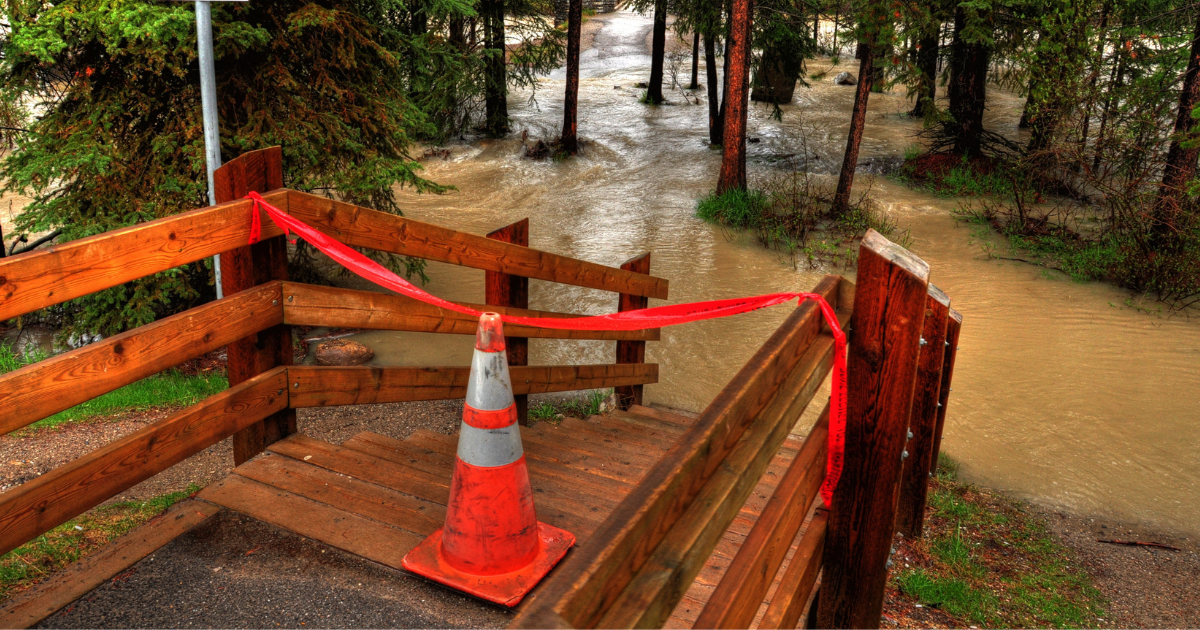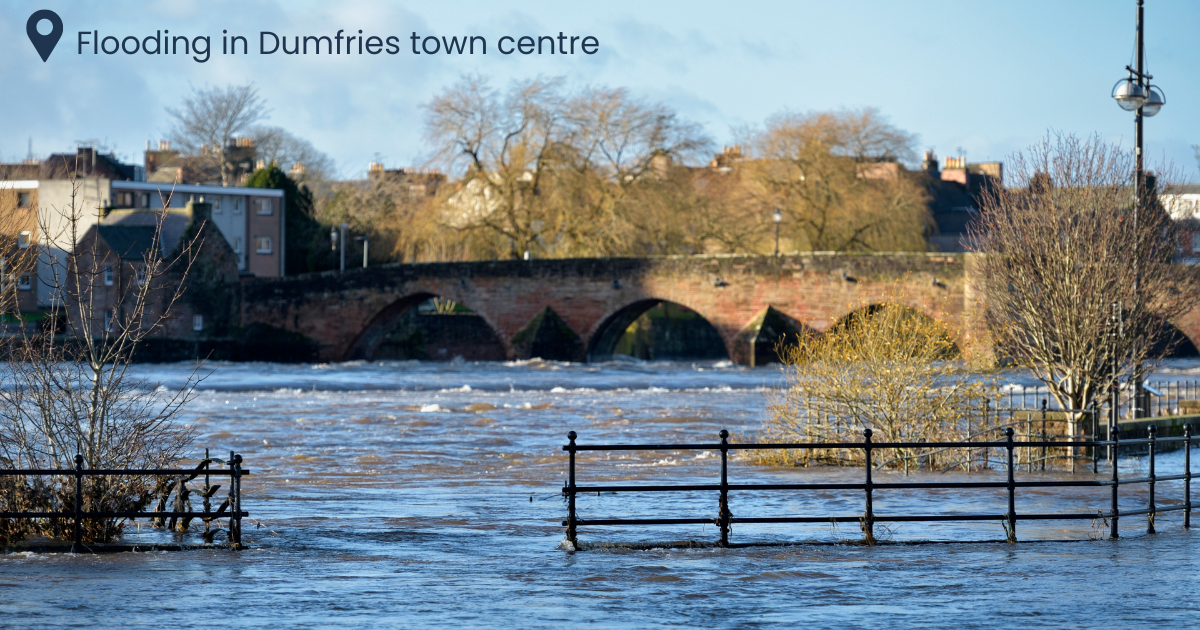Climate Change & Flooding
Erratic and unseasonal weather is becoming increasingly common in the UK, with damage and disruption to thousands of homes and businesses becoming almost commonplace. There are countless examples of widespread flooding in recent years. With Norfolk and Suffolk experiencing severe flooding in late 2023 despite having a dry year. Even as recent as January 2024 Nottinghamshire has experienced heavy flooding with villages becoming completely isolated.

Over the last 50 years, the UK has become warmer with average temperatures in summer increasing by 1.4°C and winter by 1.15°C. Precipitation in the UK is generally expected to increase by as much as 10% by 2100. Projected increases in rainfall are likely to increase the risk of flooding, particularly in winter. In addition to traditional 'heavy engineering' methods, there are more natural and effective solutions available.
Woodland Planting's ability to fight flooding
Forests and woodlands have long been associated with an ability to reduce flood flows compared to other land uses. The four main ways woodlands can help:
- The greater hydraulic roughness exerted by trees acts as a drag on flood waters, slowing down flows and enhancing storage.
- The greater water use of trees reduces the volume of water at source.
- The higher filtration rates of woodland soils reduces rapid surface run-off and flood generation.
- The ability of trees to protect the soil from erosion.
Flood prevention data
Confor/Forest Research has shown conifers can reduce the volume of rainfall landing on the ground by 25-45%, compared to 10-25% for broadleaves.
Woodland Trust looked at various natural water management techniques at Pontbren in Wales and concluded that planting tree belts across slopes on sheep farming land increased infiltration into the soil at more than 60 times the rate of neighbouring pastures.
Tweed Forum and other organisations have taken a range of measures on the Eddleston Water to help increase rainfall interception, soil infiltration and slow overland flow-to date some 66ha of riparian woodland has been created, along with the planting of around 70,000 native trees.
Environment Agency and the Forestry Commission carried out research into the benefits of woodland planting and various publications highlight the benefits of riparian and floodplain woodlands for mitigating downstream flooding.
Forest Research have shown that increased hydraulic roughness of native floodplain woodland along a 2.2km stretch of the River Cary in Somerset was predicted to reduce water velocity by 50% and that planting shelter belts across grassland sites could reduce peak flow between 13 to 48%.
Landowners and public agencies are being urged to commence tree planting in order to offer benefits by the time greater climate change impacts the UK within the next 20-30 years.
What tree’s should I plant to prevent flooding?

Although any large scale plantation will have an effect on combatting flooding there are a number of species of trees which are particularly effective at flood prevention. For lowland rivers planting Goat Willow, Crab Apple, Rowan, Hawthorn and Blackthorn. When planting in upland streams Hawthorn, Common Alder, Grey Willow, Silver Birch and Rowan are all great candidates for flood prevention.
Political Support
Environmental Audit Committee Chairman, Rt Hon Philip Dunne MP, said:
“As we look to meet our net zero and nature goals, pressures on woodland will grow. The construction industry is increasingly looking to move away from steel and concrete to lower carbon alternatives, and timber is well placed to step in. Increasing productive forestry is welcome, though the Government must ensure that this isn’t at the expense of biodiversity.
“The Government’s target to plant 30,000 hectares of woodland in the UK by March 2025 is welcome, and by and large Ministers appreciate the conflicting challenges and demands on woodland. But the Committee is concerned that England is currently way off meeting its contribution to that UK-wide goal, and that the rate of planting must increase: not only to achieve greater biodiversity, but to ensure that the supply of timber from productive forestry is maintained.
Confor welcomed the announcement of a new group to examine what more can be done to prevent further devastating floods in the north west of England. Chief Executive Stuart Goodall said the long-term strategic approach proposed by Elizabeth Truss was the right way forward and that tree-planting could play an important part. Confor (and the Woodland Trust) is looking to meet with the Environment Secretary to discuss specific action that can be taken to encourage significant new tree planting in river catchments and Confor staff are scheduled to speak at the next meeting of the APPGF to further raise awareness at Westminster.
The Scottish Government has announced a £235 million Flood Risk Management plan involving 14 local strategies and 42 flood prevention schemes over the next five years, such as the natural flood management works currently under development near Selkirk in the Scottish Borders. Environment Minister Dr Aileen McLeod said: "Our plan is designed to improve the way we tackle the risk of flooding across the country-protecting more homes, businesses, communities and livelihoods".

The Flood Risk Management (Scotland) Act 2009 aims to look at alternative ways to manage flood risk alongside traditional 'hard engineering' techniques and the Scottish Government has set up a Natural Flood Management Group, with representation from a wide range of stakeholders, to advise on developing a NFM strategy. It will also act as a steering group for research studies commissioned to inform Scottish Government policy development.
Looking forward
The results of scientists' attempts to quantify the impact of trees and forested regions in lowering the risk of flooding are remarkable. The Pontbren Project, a multi-scale experiment conducted in Wales, revealed that broadleaved tree-planted, sheep-free plots were 67 times more efficient at absorbing surface runoff than grazed grassland. Numerous studies have demonstrated that, at small scales (inside fields, plots, and very small catchments), planting trees can dramatically reduce peak flood flows, flow volumes, and time to peak. However, as catchment scale grows, this effect becomes less pronounced.
We need government investment in natural flood management and a definite commitment to planting trees since trees provide numerous additional ecosystem services in addition to their obvious benefits for reducing flooding. The Woodland Trust is pushing government to evaluate the possibility of natural flood management (NFM) and to provide incentives for the construction of woodlands in order to produce more resilient landscapes. The Woodland Trust is collaborating with communities and landowners to implement tree planting as part of NFM programmes.











